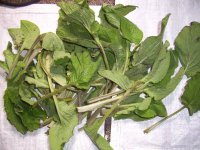Amber Trich
Active member
tulsi is interesting.. an adaptogen
do adaptogens work for plants??
I thought this was interesting...
Tulsi, Ginger, Adaptogens, Epigenetics and Evolution
bjw.. nice!
good thread scrappy
do adaptogens work for plants??
can plants protect plants from cellular damage?A number of studies have looked at the ability of holy basil to protect healthy cells from the toxicity associated with radiation and chemotherapy for cancer. Components of holy basil consistently limit the damage that radiation causes to the bone marrow and digestive tract in animals. When the cells were looked at microscopically, those animals that received holy basil had less chromosomal damage than those that received a placebo. http://www.holy-basil.com/6865.html
I thought this was interesting...
Tulsi, Ginger, Adaptogens, Epigenetics and Evolution
science has confirmed Tulsi and Ginger can reach all the way into the chromatin of a cell’s nucleus and upregulate the Histone H3, a key player in epigenetics1.
...
In the case of response to herbs being epigenetic events, note the fascinating fact that herbs themselves can turn these epigenetic events on or off. In other words, long term use of one herb that can upregulate Histone may change one’s ability to be supported by another herb.
This may be one of the mechanisms of what is called Yogavahi herbs like Tulsi that can amplify the potency of other herbs.
bjw.. nice!
good thread scrappy







